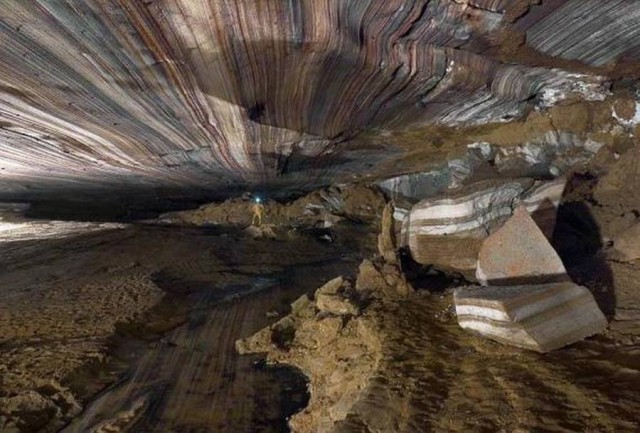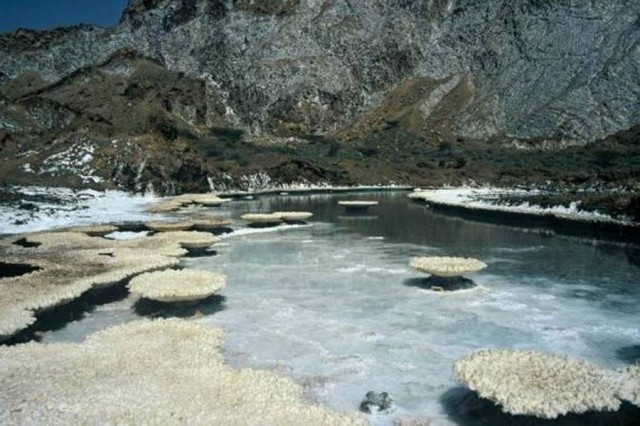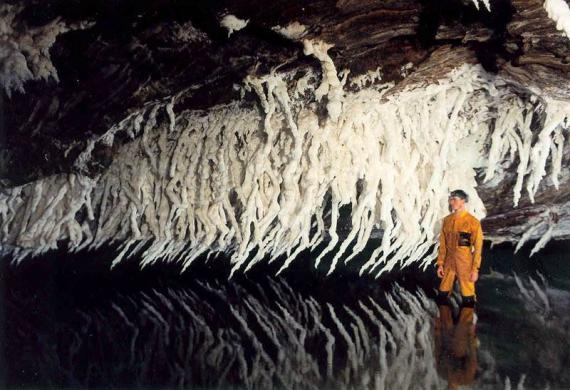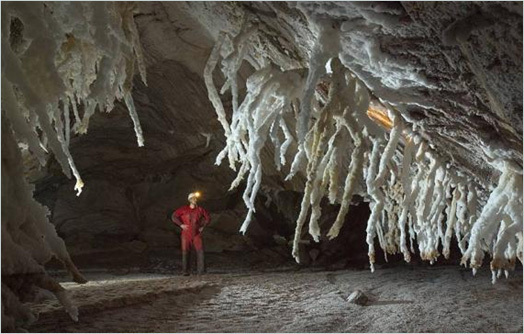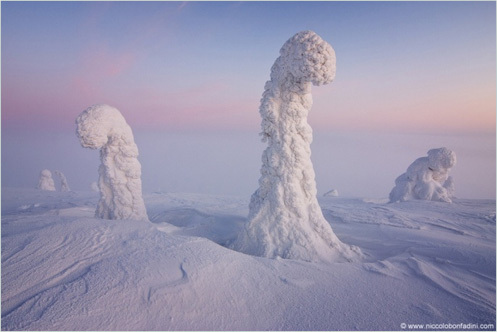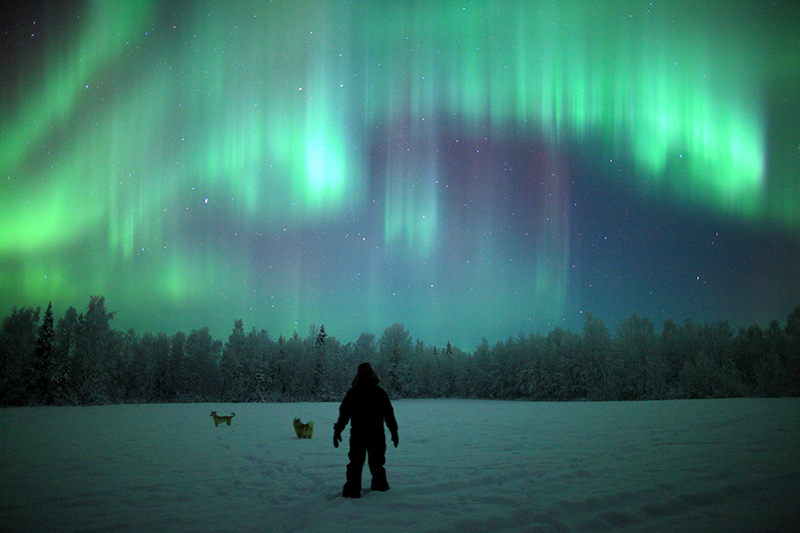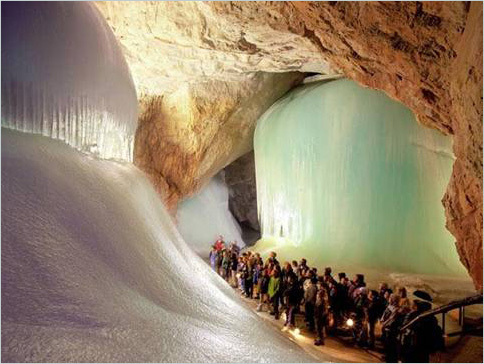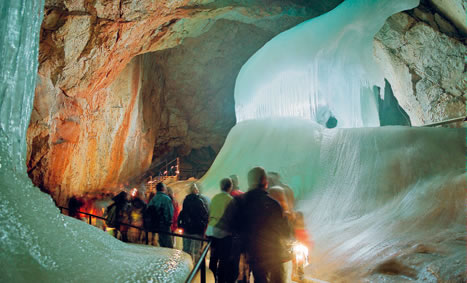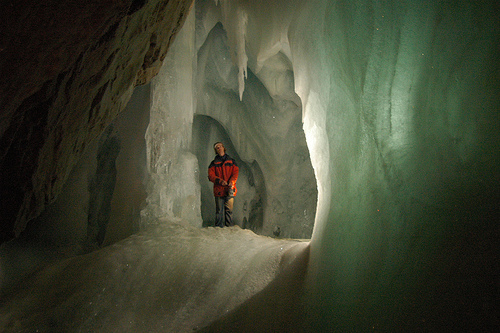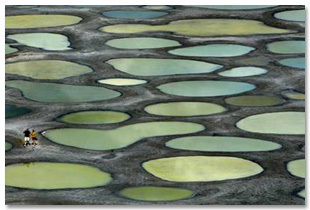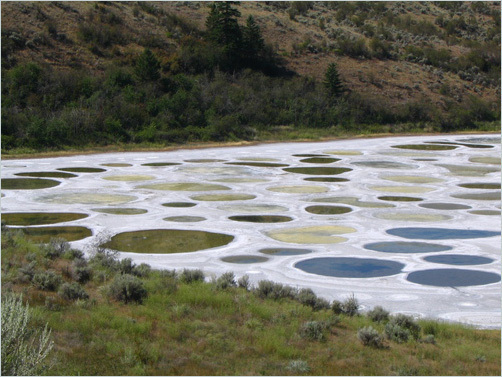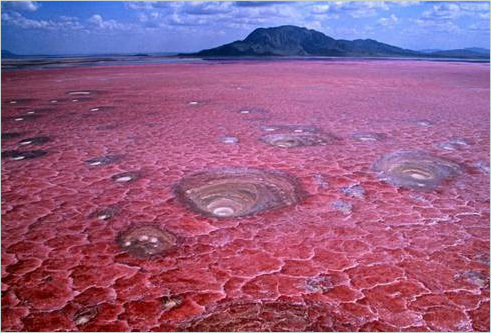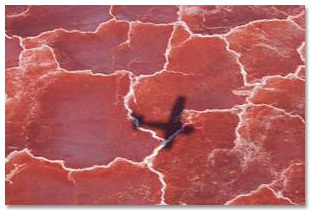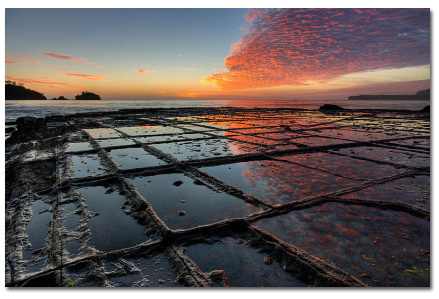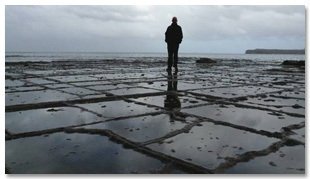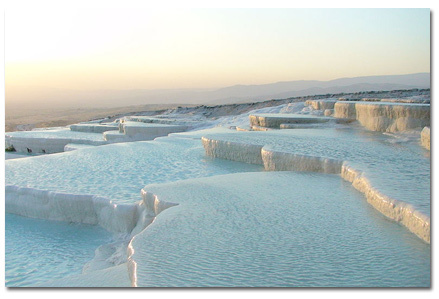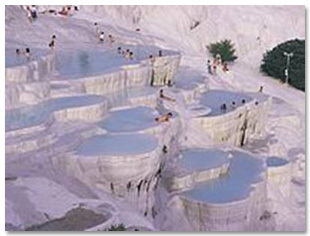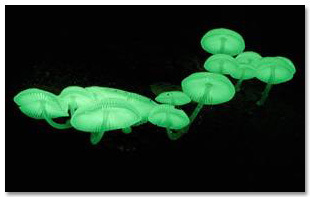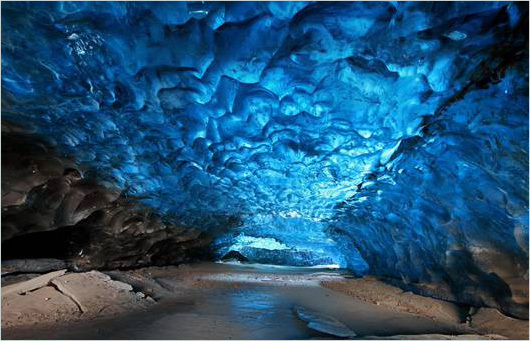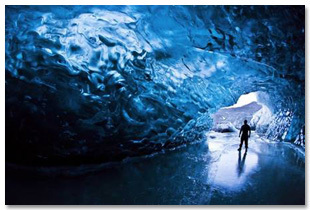By Truth | The Healers Journal
9. 3N Cave – Iran
The name of the cave is 3N Cave and it was explored by the special researchers’ team, called Namak. Namak is a multi international project, whose members are Scientists and researchers from the U.S., Iran and Czech Republic.
The project discovered 3N cave, which amazed the world. 3N is 6580 m long, which is extremely unusual for a salt cave. Up until 2006 the largest salt cave in the world was the Melham Cave, located in Israel. The 3N Cave is nearly 900 m longer than the Israeli cave.
8. Lappland – Finland
Above the Arctic Circle, Lapland comprises one-third of Finland, the country’s northernmost, largest, and most sparsely populated province, which is why it’s often called “The Last Wilderness in Europe.”
Although Lapland has four seasons, some people refer to eight seasons a year. In the summer, the vegetation sprouts flowers and bears fruit all within 3 months because the sun doesn’t set for weeks on end. In Utsjoki, in the northernmost part of Lapland, starting in the middle of May, the sun doesn’t set for nearly 70 days. If summer, with its midnight sun, is an extraordinary experience, then so is the polar night, the twilight time of the year, when there is never true darkness since the sun glows softly on the horizon.
7. Eisriesenwelt Ice Cave – Austria
The first official discovery of Eisriesenwelt was by Anton Posselt, a natural scientist from Salzburg, in 1879, though he only explored the first two hundred meters of the cave. Before his discovery, the cave was known only to locals, who, believing that it was an entrance to Hell, refused to explore it. In 1880, Posselt published his findings in a mountaineering magazine, but the report was quickly forgotten.
Alexander von Mörk, a speleologist from Salzburg, was one of the few people who remembered Posselt’s discovery. He led several expeditions into the caves beginning in 1912, which were soon followed by other explorers. Von Mörk was killed in World War I in 1914, and an urn containing his ashes is inside a niche in the cave. In 1920, a cabin for the explorers, Forscherhütte, was built and the first routes up the mountain were established. Tourists began to arrive soon after, attracted by the cave’s sudden popularity. Later another cabin, the Dr. Oedl House, and paths from Werfen and Tänneck were constructed.
6. Spotted Lake – British Columbia
Spotted Lake is very highly concentrated with numerous different minerals. It contains some of the highest quantities (in the world) of magnesium sulfate, calcium and sodium sulphates. It also contains extremely high concentrations of 8 other minerals as well as some small doses of four others such as silver and titanium.
Most of the water in the lake evaporates over the summer, leaving behind all the minerals. Large “spots” on the lake appear and depending on the mineral composition at the time, the spots will be different colors. The spots are made mainly of magnesium sulfate, which crystallizes in the summer. In the summer only the minerals in the lake remain, and they harden to form natural “walkways” around and between the spots.[2]
Originally known to the First Nations of the Okanagan Valley as Khiluk, which was- and remains today revered as a sacred site producing therapeutic waters. During World War I the minerals of Spotted Lake were used in manufacturing ammunition. Later the area came under the control of the Ernest Smith Family, for a term of about 40 years. In 1979 Smith attempted to create interest in a spa at the lake. The First Nations responded with an effort to buy the lake; in October 2001 they finally struck a deal. First Nations arranged the purchase of 22 hectares of land for a total of $720,000, and contributed about 20% of the cost. The Indian Affairs Department paid the remainder.
5. Lake Natron – Tanzania
Lake Natron is a salt lake located in northern Tanzania, close to the Kenyan border, in the eastern branch of the East African Rift. The lake is fed by the Southern Ewaso Ng’iro River and also by mineral-rich hot springs. It is quite shallow, less than three meters (10 feet) deep, and varies in width depending on its water level, which changes due to high levels of evaporation, leaving concentrations of salt and other minerals, notably sodium carbonate (natron). The surrounding country is dry and receives irregular seasonal rainfall. The lake falls within the Lake Natron Basin Wetlands of International Importance Ramsar Site. Temperatures in the lake can reach 50 degrees Celsius (120 degrees Fahrenheit), and depending on rainfall, the alkalinity can reach a pH of 9 to 10.5 (almost as alkaline as ammonia).
The color of the lake is characteristic of those where very high evaporation rates occur. As water evaporates during the dry season, salinity levels increase to the point that salt-loving microorganisms begin to thrive. Such halophileorganisms include some cyanobacteria that make their own food with photosynthesis as plants do. The red accessory photosynthesizing pigment in the cyanobacteria produces the deep reds of the open water of the lake, and orange colors of the shallow parts of the lake. The alkali salt crust on the surface of the lake is also often colored red or pink by the salt-loving microorganisms that live there.
Salt marshes and freshwater wetlands around the edges of the lake do support a variety of plants.
The high temperature (up to 41°C) and the high and very variable salt content of the lake does not support wildlife. However it is an important habitat for flamingos and is home to endemic algae, invertebrates and round the margins even fish that can survive in the slightly less salty water.
The lake is the only regular breeding area in East Africa for the 2.5 million Lesser Flamingoes, whose status of “near threatened” is a consequence of their dependence on the single breeding location. As salinity increases, so do the number of cyanobacteria, and the lake can support more nests. These flamingoes, the single large flock in East Africa, gather along saline lakes in the region, where they feed on Spirulina (a blue-green algae with red pigments). Lake Natron is a safe breeding location because its caustic environment is a barrier against predators trying to reach their nests on seasonally-forming evaporite islands. Greater Flamingo also breed on the mud flats.
Even more amazing than the ability of the flamingoes to live in these conditions is the fact that two endemic fish species, the alkaline tilapias (Alcolapia latilabris and A. ndalalani; A. alcalica is also present in the lake, but not endemic), thrive in the waters at the edges of the hot spring inlets.
4. Tessellated Pavement – Tasmania
A tessellated pavement is a rare erosional feature formed in flat sedimentary rock formations lying on some ocean shores. The pavement bears this name because the rock has fractured into polygonal blocks that resemble tiles, or tessellations. The cracks (or joints) were formed when the rock fractured through the action of stress on the Earth’s crust and subsequently were modified by sand and wave action. [1]
A characteristic example of this formation may be found at Eaglehawk Neck on the Tasman Peninsula of Tasmania. This example consists of two types of formations: a pan formation and a loaf formation.
The pan formation is a series of concave depressions in the rock that typically forms beyond the edge of the seashore. This part of the pavement dries out more at low tide than the portion abutting the seashore, allowing salt crystals to develop further; the surface of the “pans” therefore erodes more quickly than the joints, resulting in increasing concavity.
The loaf formations occur on the parts of the pavement closer to the seashore, which are immersed in water for longer periods of time. These parts of the pavement do not dry out so much, reducing the level of salt crystallisation. Water, carrying abrasive sand, is typically channelled through the joints, causing them to erode faster than the rest of the pavement, leaving loaf-like structures protruding.
3. Pamukkale – Turkey
Pamukkale, meaning “cotton castle” in Turkish, is a natural site in Denizli Province in southwestern Turkey. The city contains hot springs and travertines, terraces of carbonate minerals left by the flowing water. It is located in Turkey’s Inner Aegean region, in the River Menderes valley, which has a temperate climate for most of the year.
The ancient Greco-Roman and Byzantine city of Hierapolis was built on top of the white “castle” which is in total about 2,700 metres (8,860 ft) long, 600 m (1,970 ft) wide and 160 m (525 ft) high. It can be seen from the hills on the opposite side of the valley in the town of Denizli, 20 km away.
Pamukkale’s terraces are made of travertine, a sedimentary rock deposited by water from the hot springs.
In this area, there are 17 hot water springs in which the temperature ranges from 35 °C (95 °F) to 100 °C (212 °F).[citation needed] The water that emerges from the spring is transported 320 metres (1,050 ft)[citation needed] to the head of the travertine terraces and deposits calcium carbonate on a section 60 to 70 metres (200 to 230 ft) long covering an expanse of 240 metres (790 ft) to 300 metres (980 ft). When the water, supersaturated with calcium carbonate, reaches the surface, carbon dioxide degasses from it, and calcium carbonate is deposited. The depositing continues until the carbon dioxide in the water balances the carbon dioxide in the air.[citation needed] Calcium carbonate is deposited by the water as a soft jelly,[citation needed] but this eventually hardens into travertine.
2. Foxfire Bioluminescence – Occurs in Various Places
Foxfire, also sometimes referred to as “fairy fire”, is the bioluminescence created by some species of fungi present in decaying wood. The bluish green glow is attributed to luciferase, an oxidizing agent, which emits light as it reacts withluciferin. Although the purpose is unknown, it is widely believed that the light is meant to attract insects to spread its spores or, to act as a warning to hungry animals, similar to the bright colors exhibited by some poisonous or unpalatable species of animals. Although generally very dim, in some cases the illumination may be bright enough to read by.
The oldest recorded documentation of foxfire was written by Aristotle in 382 B.C. His notes make a reference to a light that, unlike fire, was cold to the touch. The Roman thinker Pliny the Elder also mentioned glowing wood that appeared in olive groves.
On the suggestion of Benjamin Franklin, it was used for light in the Turtle, an early submarine.
Although there are many more literary references to foxfire by early scientists and naturalists, the true cause was not discovered until 1823. The glow emitted from wooden support beams in mines was examined, and it was found that the luminescence was due to fungal growth.
1. Crystal Cave – Iceland
The centuries old ice coming down the slopes of Öræfajökull via Svínafellsjökull glacier has had almost all of the air pressed out of the ice. Once air has been pressed out the ice turns into this magically blue crystal like ice. The outer surface of this ice (the surface of the glacier) gets bombarded by weather, sun-rays, dust and other things and it transforms the crystal blue ice white. Hidden under the white surface is the blue ice.
This blue ice can be seen however under certain circumstances. It can be seen in winter after long periods of rain when the surface layer of the glacier has been washed away. It can be seen in ice-caves like this one (unsafe in summer) and on floating icebergs that have recently rolled over.


